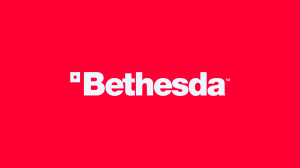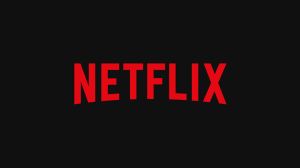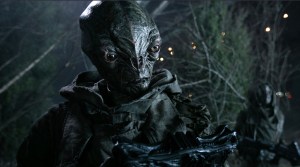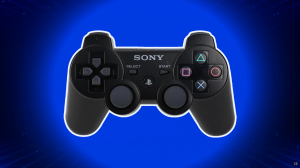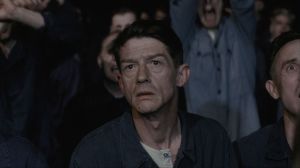Disney Channel is set to air the first few episodes of the Big Hero 6 The Series, the highly anticipated follow-up to the beloved animated feature Big Hero 6, this weekend. The premiere, which takes place on both Saturday and Sunday morning, will give fans a chance to jump back into the world of Hiro, Baymax, and all of the characters they’ve come to love.
Videos by ComicBook.com
To help break down what the new series is all about, and what fans can expect heading into Saturday’s premiere, ComicBook.com spoke with Big Hero 6 The Series showrunners Bob Schooley and Mark McCorkle.
****
ComicBook: What were some of the challenges in bringing a property like Big Hero 6 to the small screen?
Bob Schooley: Well, obviously, visual, first of all. And that the CG in the movie was so gorgeous and so expensive, that we quickly made the decision that, you know, more of a stylized 2D approach, more like what we did when we did Kim Possible would free us up. And make it, yeah, have action scenes, because if they try to do what they did in CG on TV for action would be, I think, kind of impossible.
But that was the first decision. And then the great thing about the movie is at the end, you really feel like it’s teeing up the TV series. It’s like now the adventures are gonna start.
Mark McCorkle: It was nice to be able to a spinoff where you don’t have to do any kind of reset, where you don’t have to go backwards. The movie itself ends with this launch, literally them launching at camera in their gear, and it’s great, ’cause it set up a lot of new beginnings. Hiro is a new student at the school, he and the team are new at being superheroes. It just felt like the beginning of a journey, which is ideal for TV series.
In an ever-growing landscape of superhero and comic properties, what sets Big Hero 6 apart?
Schooley: I think when we first kind of broke it down to pitch a series, looking at the movie we were really kind of struck by it’s sort of equal parts action, comedy, and heart. And I think, at least for a superhero series, less so for other Marvel movies or whatever they play a part, getting that heart in there of, it’s this property where hugs are meaningful. There’s a lot of hugging going on. So, it has a sort of humanity to it, I think, which is ironic considering there’s a robot in the center of it, but it just had a different vibe than other superhero shoes. And we’ve never really done a traditional superhero show, anyway, so I think it was sort of in our wheelhouse to run with that.
I think the stuff we do, we try to really drill down on character and with this property, obviously the Hiro/Baymax stuff is all great, but also you have all these other characters that really didn’t have a chance to step forward in the movie as much with the other guys on the team. So, it was exciting to have that opportunity to sort of like, let’s flesh everybody out. This is the biggest cast we’ve ever worked with, I think, in terms of regulars. And a lot of great voices, too.
You guys are known for shows like Kim Possible and Buzz Lightyear Star Command, which are much smaller in scale than Big Hero 6. How does this series compare to those earlier projects?
McCorkle: Well, one of the things in the past Bob and I have always sort of flown by the seat of our pants a little bit in terms of we had more of a zen approach. Like Kim Possible, a lot of things, we built that mythology as we went along.
That being Ron being afraid of monkeys and then having certain monkey legends, like all that was just shooting from the hip, making it up as we went along, and things would sort of fall into place. This series […] From the very beginning, we sat down and planned out a season arc for season one with a lot of intertwining things about the history of the city, history of the various characters. We just stretched a bunch of different muscles, the storyteller muscles, than what we normally do. So, it was definitely a new experience for us.
Big Hero 6 certainly has its own mythology rooted in Marvel Comics, and you’ve got the iconic Stan Lee reprising his role as Fred’s father in the series. What was it like, working with him on this project?
Schooley: It was intimidating. To give him new character names to have to say and stuff felt like, “Is he gonna like it?!” But he was a dream. He came in, and he was game to do pretty much anything, and just really fun to work with. But there is this intimidating feeling where you’re working with someone who is a living legend, someone who created the modern superhero mythology that we’re all lining up at the movie theaters to see and–
McCorkle: It’s like showing Edison the new light bulb you invented.
Schooley: It’s an honor and it as a pleasure, but it was definitely intimidating. But he was such a sweet man. He was very enthusiastic and complimentary. He was a dream to work with.
And I think people have been looking forward to seeing more from that character since his cameo in the movie was a bit of a cliffhanger.
Schooley: Well, it’s fun because it kinda opens it up to this multigenerational superhero thing of, we don’t overplay it, but there is, we sort of in the mythology of the show, Fred’s dad was a superhero in the ’70s, so there’s some of his foes from back then that show up. It’s fun to play. We have Jane Lynch as an old foe of his, and she was definitely hysterical. So, it’s fun to have the sense of history to the world like that.
Speaking of Marvel, did you guys have any room to introduce some other characters, given that Big Hero 6 was originally a comic property, or does this stay self-contained?
McCorkle: I think it does. The folks that made the movie, a lot of their choices in terms of character and story and all–
Schooley: Veered so much from the comic.
McCorkle: It bears almost no resemblance to the comic, so we kinda felt like well, maybe we shouldn’t even go back and look at the comic, just use the movie as our map.
Schooley: Our launching point. At this point, because the movie, it has Marvel roots, but it wasn’t branded a Marvel movie by any means, we have not tied it into anything else in the mythology. Never say never, someday it may happen, but–
McCorkle: Yeah, and it would be fun to see these characters interact with other characters. But I think one of the things we found from a storytelling point of view, it’s such a big ensemble of characters, with all our guys and villains, we had a full plate. We definitely didn’t need any guest stars.
You guys do have a lot of guest stars, though, including your former Kim Possible, Christy Carlson Romano.
McCorkle: It was great. It was great to have her do a more villainous role, which is a nice change of pace for her. We’ve had fun with our voice cast, we’ve a lot of really interesting mix of people who are very dramatic or who are like Andy Richter, very comedic.
Schooley: We were just talking about how Alan Tudyk’s character in the movie is pretty straight, and he obviously exists in the movie as this red herring [in that] you think he’s the villain. But once we started working with him on the series, he is such a funny actor, we just couldn’t stand to keep him straight, so he became a much more comic character, and he just, he’s brilliant. Anything you give him, he makes it 200% more funny.
Did you know when you started the show that you would have essentially the entire main cast from the movie returning?
Schooley: Well, we always hoped. And we definitely shot for it. But no, we had no idea who would be onboard and who wouldn’t. But it’s always our goal to get as many as possible. Like when we did Aladdin, we had everybody but Robin Williams for the series. So, it’s nice ’cause I think it just gives it more continuity with the movie, which is always nice.
McCorkle: Well, and one of the things we’ve found with all the characters, but particularly with Scott Adsit who plays Baymax, was [he had] such a creative role in making that character come to life, he really is good at coaching us and the writing staff as to how to write the character. And the same’s true of everybody. Every one of them really has a lot of pride of ownership of creating those characters. So they really do help guide the way as to what new dimensions we can explore with them.
Baymax isn’t necessarily the center of attention in this series, was that intentional?
McCorkle: I think Baymax is the hardest character we’ve ever had to write for, because it’s this incredible balancing act between the robotic and the human parts of him. He’s not Data on Star Trek where he’s getting more and more human as we go along. They were pretty emphatic, the directors of the move and Scott of, “No, he’s a robot.” So, it’s finding those ways where you kind of read into his reaction a little bit of humanity, but if you analyze it, it’s not really there, which they were brilliant in the movie with sort of that block. So, and it is one of the things I think like you said, a little Baymax goes a long way and he’s this impactful character in small doses. I think just on a practical, with a character that speaks that slowly, if you gave him a ton of lines everything would slow down so much.
One of the things the director said to us is Baymax always sets the pace of a scene because he is a very deliberately speaking character.
Schooley: I think, too, there’s an element that you hit on. When he’s used sparingly, it has more impact. But I think, also, that applies to other aspects of the show. Our characters spend a good bit of every episode not in their superhero gear. You know, regular, living regular lives and that way when they are in their gear, it has more impact. It’s one of those things, it would be tempting that Baymax is so loved and so funny to just put him front and center all the time and rely on that. But I think the idea of trying to balance the recipe of how much Baymax, how much action, how much comedy, I think it makes for a better show ultimately if we can control ourselves a little bit.
What can fans expect as they head into the Big Hero 6 series premiere this weekend?
Schooley: I think in general, it gets a little darker as it goes along. Maybe a lot darker, I dunno. I would definitely say pay attention, our first few episodes, all kinds of things are set up and end up paying off later. Sometimes having to do with the big arc or sometimes just the world of San Fransokyo. Pretty early on we see Hiro eating some Mr. Sparkle cereal and, I think in one of the shorts, maybe, and then later, we’ll meet Mr. Sparkle as a character. So, a lot of things get set up very early on that play a role throughout the season. Sometimes a huge role like Alan.
****
Big Hero 6 The Series premieres on Saturday, June 9th at 9am ET on Disney Channel.


